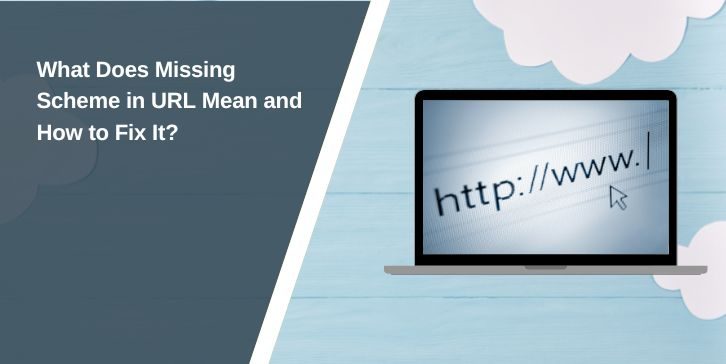A URL scheme, also called a protocol, is the first component of a web address. It specifies the method a browser or application should use to access a resource. Examples include:
http://: HyperText Transfer Protocol, commonly used for websites.https://: Secure version of HTTP, encrypted for safer communication.ftp://: File Transfer Protocol, used for file sharing and storage.
Role of Schemes in URLs
- Guides Browsers: Schemes tell the browser how to handle the URL and what protocol to use.
- Ensures Proper Connection: Without a scheme, the browser may not know whether to connect securely (via HTTPS) or insecurely (via HTTP).
For example, https://example.com explicitly instructs the browser to use a secure connection, while example.com leaves it up to interpretation.
What Does Missing Scheme in URL Mean?

A URL scheme is an essential part of any web address, guiding browsers and systems on how to access resources. If a scheme like http:// or https:// is missing, it can lead to errors or miscommunication between servers and clients. This article explores the concept of URL schemes, why they go missing, the effects of such issues, and how to fix them.
Why Do Schemes Go Missing?
Schemes can go missing from URLs for several reasons, often stemming from simple errors or outdated practices. One common cause is improper formatting, where URLs are incorrectly entered or truncated during processes like copy-pasting.
This oversight can leave the web address incomplete, omitting the necessary protocol that guides browsers or systems in handling the URL correctly. Another reason stems from configuration issues within content management systems (CMS) or other tools, which might fail to append the scheme due to improper settings or limitations in automation.
Lastly, legacy links from older websites or APIs might lack schemes entirely, as they were created before the widespread adoption of modern protocols like HTTPS.
When a scheme is missing, browsers and applications attempt to interpret the URL. In most cases, they default to http://, the standard unsecured protocol. However, this default behavior can create problems if the resource being accessed is hosted exclusively on https://, a secure protocol.
Without the correct scheme, these resources may be unreachable, leading to connection errors or security warnings, which can disrupt user experiences and impact the functionality of systems relying on the URL.
Impact of Missing Schemes
Here’s what happens when schemes are missing from URLs and how it can affect functionality and user experience:
Effects on Browsers and Applications
- Browser Interpretation: Modern browsers can sometimes infer the scheme, but this is not always reliable, especially for secure connections.
- Connection Errors: Missing schemes may result in errors when connecting to servers that enforce HTTPS.
Impact on SEO and Website Functionality
- Broken Links: Search engines may treat scheme-less URLs as incomplete, affecting indexing.
- Redirect Loops: Improperly formatted URLs may cause redirect loops or lead to error pages.
- Security Risks: Defaulting to HTTP can expose users to vulnerabilities and data breaches.
How to Fix a Missing Scheme in URL
Follow these steps to address and resolve missing schemes in URLs effectively:
1. Manually Add a Scheme
Ensure all URLs include the appropriate scheme. For example:
- Replace
example.com with https://example.com.
This is especially important when adding links to HTML, CSS, or JavaScript files.
2. Automate Fixes with Tools
Use scripts or plugins to identify and fix scheme-less URLs:
- WordPress users can use plugins like Better Search Replace to update URLs in bulk.
- Developers can write scripts to prepend
https:// to URLs missing schemes in databases or codebases.
3. Validate URLs with Tools
Run your website through tools like:
- W3C Validator: Detect missing schemes and other URL-related issues.
- Browser Developer Tools: Inspect the source code to ensure all links have schemes.
4. Configure HTTPS Enforce Settings
On web servers, enforce HTTPS connections to prevent access to URLs without schemes. For example, add this rule in .htaccess:





